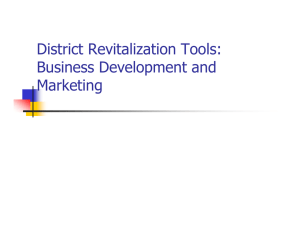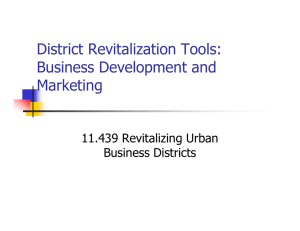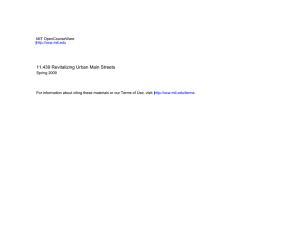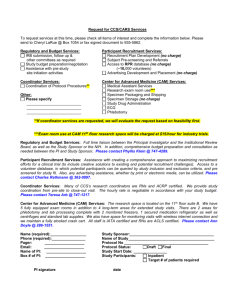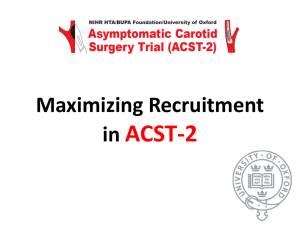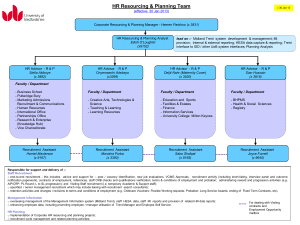ppt - EFN Asia
advertisement
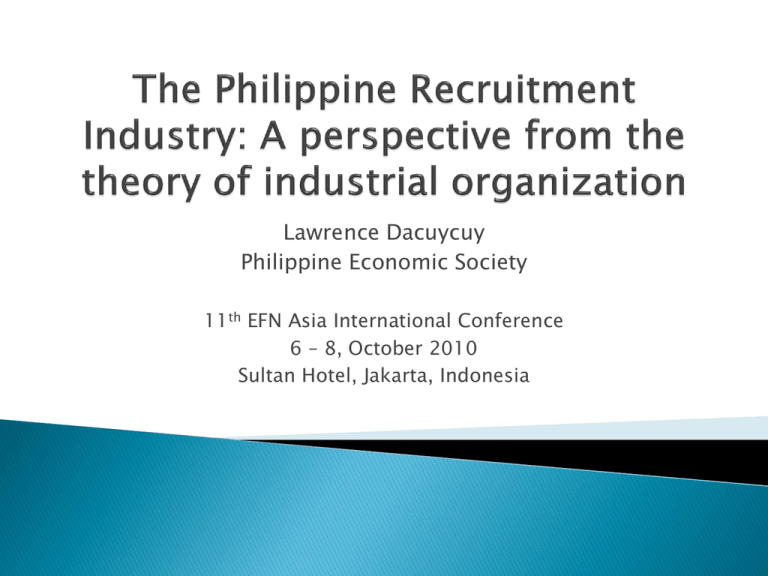
Lawrence Dacuycuy Philippine Economic Society 11th EFN Asia International Conference 6 – 8, October 2010 Sultan Hotel, Jakarta, Indonesia To interpret the current state of affairs in the Philippine recruitment industry by appealing to the theory of industrial organization. To identify key questions that will be the basis of a comprehensive survey that will be undertaken to determine the structure, conduct and performance of recruitment agencies To identify key stylized facts that will be used to formally model the recruitment industry. Private recruitment agencies have a central role in facilitating migration. The industry is characterized as an information industry and asymmetric information emerges as a dominant concern (Martins 2002). The industry is heavily regulated by a central regulator known as POEA. Licensing costs and capitalization requirements have played a vital role in limiting entry but have unintended consequences as far as competition promotion is concerned. Incentives are provided with the intent of increasing competition. High licensing costs, direct hiring limitations and ownership restrictions have resulted in a reconfigured industry. Based on Agunias (2009), recruiters that operate along the UAE – Philippines corridor are facing stiff competition and increasing market saturation. There is evidence that land-based recruiters now deal with additional layers of intermediaries. There is evidence that some firms do not exit the market despite experiencing difficulties (Agunias, 2009). In 2009, the number of recruitment agencies is 1349 Land – based (72%), sea – based (28%). Limiting the number of firms serve two purposes, namely, lowering monitoring costs and enforcing positive self – selection. Based on International Organization of Migration, firms that do not perform satisfactorily in terms of deployment performance get suspended. To minimize private information costs generated by illegal recruitment, the regulator also publishes a firm registry that includes firms that have been delisted, forever banned and those that are in good standing. Deployment has been robust, despite a reduction in the number of registered principals. Deployed workers are still dominated by relatively lower skilled workers. Based on a study by Dy, Hernandez, Pascual and Ples (2009), the behaviour of agencies is dictated by the nature of the relationship between the principal and agency. Recruitment strategies vary with the objectives of the principal. Sampled seafarers still value faster deployment, higher wages In an industry, wherein players value information, the regulator should allow more information to be posted in public registries by consolidating data on firm dynamics (e.g. number of years in operation, number of deployed workers, number of awards) Require all agencies to have stable websites and standardize content Ensure that failing firms exit the industry by introducing more stringent performance indicators. The regulator should also be mindful of unintended effects of over-regulation on the evolution of the industry, in the sense, that its evolution should highlight better prospects of viability and heightened accountability.




